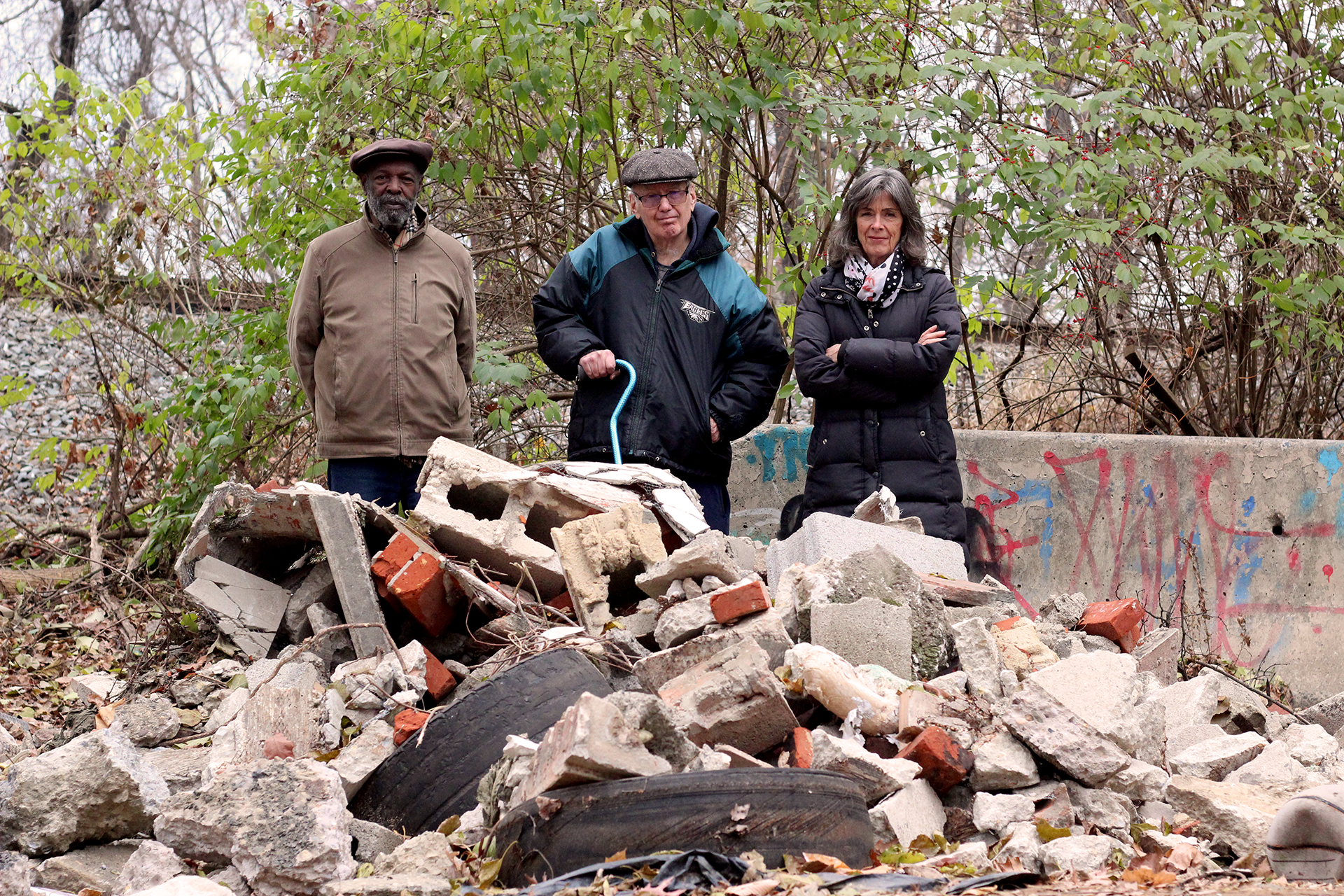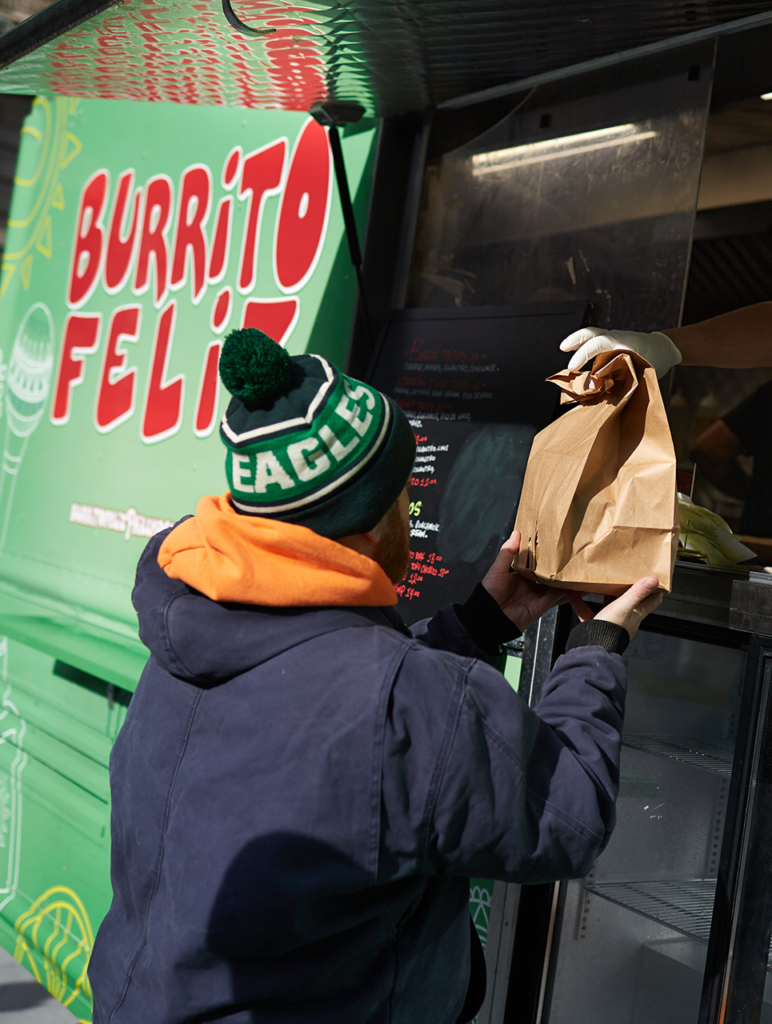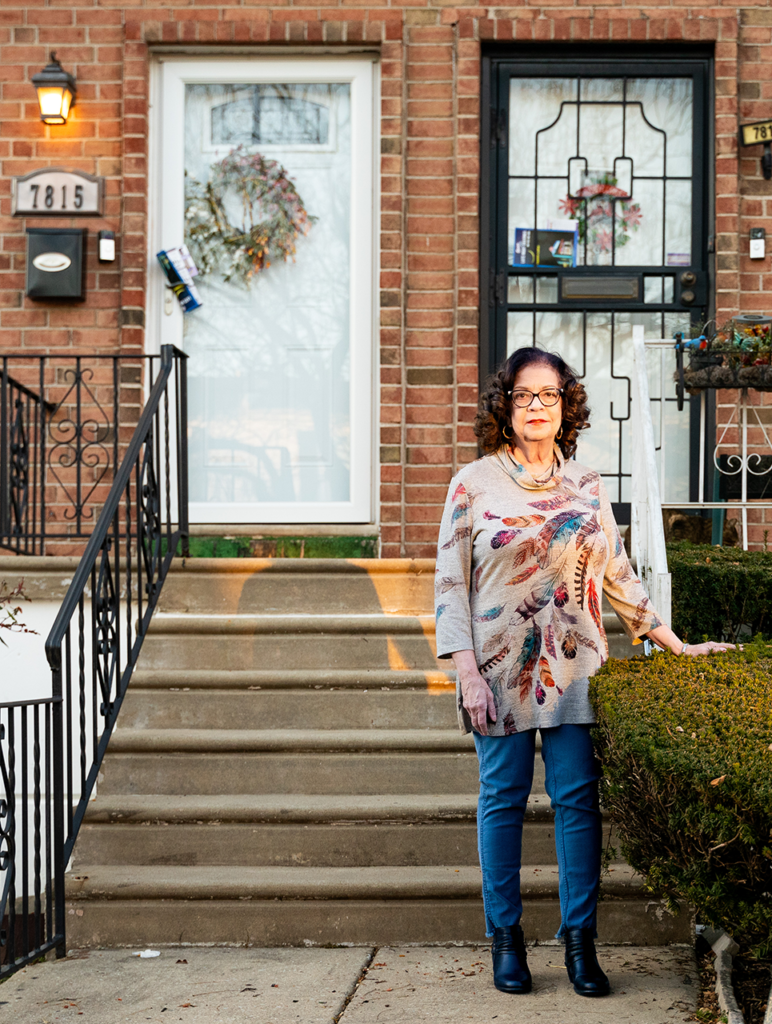“My life,” says Julie Slavet, “is all about tires.”
Slavet is exaggerating — but only slightly. As the executive director of the Tookany/Tacony-Frankford Watershed Partnership, part of her job is to help improve Tacony Creek Park, a 300-acre preserve in Northeast Philadelphia. And for the last couple years, that’s meant dealing with illegally dumped tires.
The last time they appeared, she says, was early this fall. There were around 500 of them, scattered underneath the Whitaker Avenue bridge, a popular spot for illegal dumping. “People dump in places where they’re not going to get noticed, and there aren’t a lot of eyes on the bridges at night,” she says. “Trucks pull up, back up, and they just dump the tires over the bridge.”
Tire dumping isn’t just a problem in Tacony Creek Park — it’s all over the city. In December 2021, dumpers unloaded nearly 4,000 tires — about 80,000 pounds worth — at a business in Frankford. And in October 2023, the U.S. Army Corps of Engineers reported pulling more than 3,000 tires out of the Schuylkill River during the second phase of a dredge project. In 2022, according to the Mayor’s Office, the City cleaned up 2,672 tons of dumped tires.
The tire dumping problem is just one facet of a larger illegal dumping issue that has long plagued the city. But tires present a special danger. Tires collect water, which makes them an ideal breeding ground for disease-carrying mosquitoes. They’re also highly flammable. In 1996, a fire famously erupted at a lot under I-95 where a pile of at least 10,000 tires was being illegally stored. In 2021, a huge pile of tires at a junkyard in Southwest Philly went up in flames, sending smoke into the air that was visible for miles.
The Tookany/Tacony-Frankford Watershed Partnership organizes weekly cleanups in the park, Slavet says. But tires, unlike smaller, lighter forms of trash that regularly turn up in the park, can’t be simply picked up and bagged by volunteers. “Getting rid of tires is not pleasant at all. It’s really hard work,” she says. So, as she’s done many times before, Slavet called Parks & Recreation, which took about a month to finish the job.
Slavet was glad to see the tires go and grateful for the City’s help in removing them. But she knows it’s only a temporary solution. In a couple weeks or months, she figures, they’ll be back to remove tires again.

Why is tire dumping so persistent in Philadelphia? Nic Esposito, the former director of the City’s now-defunct Zero Waste and Litter Cabinet, understands the issue better than most. In 2018, he spent months studying the problem. It starts, he says, with tire dealers.
Tire dealers, he says, have to get rid of old tires. And the easiest, cheapest way to do that is to hire a small hauler — essentially, someone with a truck — to come by and take them away. Currently, according to a list provided by the Pennsylvania Department of Environmental Protection, there are just two certified waste tire processing facilities nearby where haulers can bring those tires; one is Delaware Valley Recycling in Southwest Philly. When reached by phone, however, an employee, who would not give his name, said the company used to send tires to a landfill, but they stopped taking in tires about two years ago.
The other facility is Emmanuel Tire of Pennsylvania, which is located in Conshohocken. For many small haulers looking to make a quick buck, it’s more time and cost efficient to skip the trip outside the city and simply dump tires in places like Tacony Creek Park. “The tire dealers have no idea where the haulers are taking the tires. They don’t really care,” Esposito says. “A lot of times it’s willful ignorance.”
It’s almost like it’s voluntary if you actually want to follow the rules. If you don’t, there’s no repercussions for it.”
— Nic Esposito, former director of the City’s Zero Waste and Litter Cabinet
Esposito realized back in 2018 that City officials also had no idea where tire dealers were sending their old tires. So he developed legislation to help them find out — and to shut down dealers who weren’t practicing proper waste disposal. That November, City Council passed Bill No. 180648, an ordinance that requires tire dealers to get a license in order to operate. To qualify for the license, tire dealers have to contract with a waste hauler registered with the state. They also have to keep a manifest documenting every old tire they receive and every tire that goes out for disposal. As part of the program, the City’s Department of Licenses and Inspections (L&I) is empowered to inspect tire dealerships at random, review their manifests to ensure tires aren’t mysteriously disappearing, and, if necessary, revoke or suspend the license of non-compliant dealers.
The tire dealer license program has been active since August 2021. But the rollout is still incomplete. In the past two years, L&I says it has inspected 74 tire dealers and issued 57 licenses. But there are still tire dealers that haven’t yet applied, and L&I would not share a timeline for when the remaining dealers would become licensed. It’s also unclear if L&I is enforcing some of the measures designed to deter dumping. L&I didn’t say how often it has randomly inspected tire dealer manifests, or if it has done any such inspections at all. And the department would not say how many non-compliant tire dealers, if any, have had their licenses suspended or revoked.
“It’s almost like it’s voluntary if you actually want to follow the rules,” says Esposito. “If you don’t, there’s no repercussions for it.”
The inconsistency of the rollout is likely due to a deficit of resources at L&I, a historically underfunded department. But the City is paying far more to clean up tires than it would to hire a few more inspectors at L&I. In 2022, the City paid $253,888 in disposal fees — more than double what it paid in 2016 — for the tires it collected. The total cost of getting tires off the streets — including things like labor and fuel — is far higher than that. According to a 2013 study from the nonprofit Keep Pennsylvania Beautiful, the average municipal costs for cleaning illegal dumping is $619 per ton. By that metric, the City is likely spending more than $1.5 million annually to clean up tires. (The City does not track the total cost of tire disposal.)
“They have a really powerful tool in their toolbox. Why aren’t they using it to the full ability?” says Esposito of the tire license program. “They’re investing in the reaction and the response rather than the proactive, preventative measures.”
It’s embarrassing. People do come to visit, and it doesn’t look good for the whole neighborhood.”
— Dallas Herbert Sr., Lawncrest resident
The deluge of dumped tires has only intensified in recent years. In 2016, according to the Mayor’s Office, the City removed 1,372 tons of tires — about half the tonnage hauled away by the City in 2022. Complaints from residents about the problem remain a steady drumbeat. According to the Mayor’s Office, Philly311 received 2,098 service requests regarding illegally dumped tires in 2022 — more than five calls per day. That’s fewer than the recent peak of 2,889 calls in 2019, but still far more than in 2017 when the City received 1,736 calls on the matter.
According to the Mayor’s Office, the most service requests related to illegally dumped tires are coming from some of the city’s poorest neighborhoods. The top three zip codes —19140, 19134 and 19124 — are all areas where the median household income is less than $30,000. “The dumping map and the redlining map interface with each other very, very closely,” says Shari Hersh, a longtime member of Trash Academy, a group working to end littering and dumping in the city. “This is happening over and over again in communities that have had generations of environmental injustice and environmental burdens.”
One of the zip codes where residents are calling frequently about tire dumping is 19120, which covers most of Tacony Creek Park. It’s also where Dallas Herbert Sr. has lived for more than 20 years. Since he retired, he’s been spending more of his time working with members of 215 People’s Alliance to keep his community clean — specifically, a stretch of Newtown Avenue known locally as Snake Road because of how it curves. “Snake Road is a legacy dumping spot. This has been a problem for generations,” Herbert says. “If you don’t clean up the tires right away, they’ll just add more. Before you know it, you’ve got a safety issue.”

After years of advocacy, the Department of Streets installed three security cameras on the road. But Herbert says they haven’t stopped the illegal dumping. The City, meanwhile, has begun paying a contractor to clean up the street once a month. Still, Herbert says he calls 311 about twice a month to report tires. And most days, he finds driving on the road is like navigating an obstacle course.
With a new mayoral administration incoming, there’s a chance for renewed focus on addressing the root causes of this long-standing problem, Herbert says. For him, stopping the flow of tires isn’t just a matter of public safety; it’s also a matter of civic pride. “It’s embarrassing. People do come to visit, and it doesn’t look good for the whole neighborhood,” he says. “It’s been such a long time that this has been happening. The community is just fed up with it.”









Should the idea that our do hardly anything good council would pass a law, with all the bells and whistles that are involved in that process, only to have it be reported that the problem they claimed to address is even a larger problem several years later? I’ll suggest that’s what should be expected, at best. And what’s the deal with L&I, if they can’t enforce laws that they are required to because lack of funding, why can’t they truthfully answer about what they are and aren’t doing. Once again it seems like the leadership in this City at all levels, is very content to do little to nothing to actually address real world problems. Maybe we’ll get lucky, and council will have a hearing about this problem. That will show the citizens they are hard at work doing nothing.